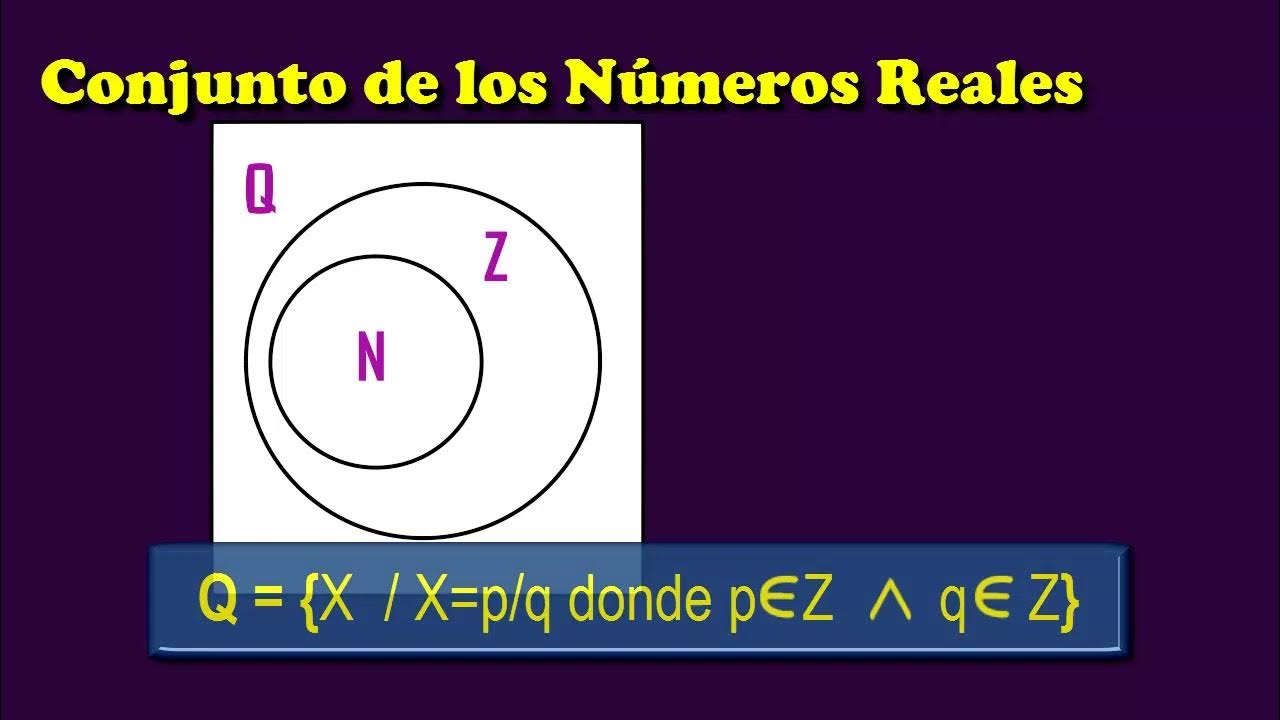All the Numbers - Numberphile
Summary
TLDRIn this video, Matt Parker explores the vast world of numbers beyond just whole and rational numbers. He discusses different types of numbers including constructible, algebraic, transcendental, computable, and uncomputable numbers. Parker highlights how mathematicians categorize these numbers using Euler diagrams and shares fascinating insights about normal numbers, emphasizing how most numbers are both uncomputable and normal. Despite this, only artificially created normal numbers are known. The video concludes with a mention of Parker's new book, 'Humble Pi,' and its content related to mathematical errors.
Takeaways
- 🔢 The video discusses the categorization of numbers, starting with whole numbers and expanding to rational, algebraic, and transcendental numbers.
- 📈 The script explains that rational numbers include whole numbers as a subset and are any number that can be expressed as a ratio of two integers.
- 📐 Constructable numbers are a subset of algebraic numbers, which can be created using only a compass and straightedge, like the golden ratio (Phi).
- 📘 Algebraic numbers are solutions to algebraic equations and can include both constructable numbers and those that require higher roots or powers.
- 🌐 Transcendental numbers are not solutions to any algebraic equation and include famous constants like pi and e.
- 🤖 The concept of computable numbers is introduced, which are numbers for which an algorithm can be written to calculate their digits, such as pi and e.
- 📚 The script touches on the history of proving numbers as transcendental, with e being the first proven in 1873 and π in 1882.
- 🔍 It is mentioned that there are numbers that are known to exist but are difficult to define or understand, referred to as 'dark numbers'.
- 🎲 The video introduces the idea of normal numbers, which contain every possible digit combination with equal probability, and that Champernowne's constant is an example of a proven normal number.
- 🧩 The script highlights the vastness of numbers, indicating that most numbers are both normal and uncomputable, existing beyond our current mathematical comprehension.
- 📖 Matt Parker, a significant contributor to Numberphile, has a new book titled 'Humble Pi: A Comedy of Maths Errors', which is promoted at the end of the script.
Q & A
What are whole numbers?
-Whole numbers are the set of non-negative integers starting from 0 and going up (e.g., 0, 1, 2, 3, ...). They are a subset of rational numbers.
What is the difference between rational and irrational numbers?
-Rational numbers are those that can be expressed as a fraction of two integers, where the denominator is not zero. Irrational numbers, on the other hand, cannot be expressed as a simple fraction and have non-repeating, non-terminating decimal expansions.
What are constructable numbers?
-Constructable numbers are those that can be constructed using only a straightedge and a compass. They are a subset of algebraic numbers.
What are algebraic numbers?
-Algebraic numbers are the solutions to algebraic equations, which are equations of the form ax^n + bx^{n-1} + ... + k = 0 where a, b, ..., k are integers.
What are transcendental numbers?
-Transcendental numbers are numbers that are not algebraic, meaning they cannot be the solution to any algebraic equation with integer coefficients. Examples include π and e.
What is the significance of e being the first number proven to be transcendental?
-The proof that e is transcendental, accomplished by Charles Hermite in 1873, was a significant milestone in mathematics as it was the first time a well-known number was rigorously shown to be transcendental.
What are computable numbers?
-Computable numbers are those for which there exists an algorithm or a finite process that can determine all their digits. This includes numbers like π and e, which can be approximated to any desired degree of accuracy.
What is the concept of normal numbers?
-Normal numbers are those in which every possible finite sequence of digits appears with the correct limit frequency in their infinite decimal expansion. In other words, they are numbers that are uniformly distributed in the context of their digits.
What is Champernowne's constant and why is it significant?
-Champernowne's constant is a number formed by concatenating all natural numbers in sequence (0.123456789101112...). It is significant because it has been proven to be a normal number and is also transcendental.
What is the difference between computable and uncomputable numbers?
-Computable numbers are those for which there exists a finite, systematic method to determine their digits. Uncomputable numbers, on the other hand, cannot be computed by any algorithm or finite process, and their digits cannot be systematically determined.
What is the connection between Turing and the concept of computable numbers?
-Alan Turing, in his 1936 paper on computable numbers, introduced the concept of a Turing machine, which is considered a foundational work in the field of theoretical computer science. His work on computable numbers explored the limits of computation and identified the existence of uncomputable numbers.
Outlines

Dieser Bereich ist nur für Premium-Benutzer verfügbar. Bitte führen Sie ein Upgrade durch, um auf diesen Abschnitt zuzugreifen.
Upgrade durchführenMindmap

Dieser Bereich ist nur für Premium-Benutzer verfügbar. Bitte führen Sie ein Upgrade durch, um auf diesen Abschnitt zuzugreifen.
Upgrade durchführenKeywords

Dieser Bereich ist nur für Premium-Benutzer verfügbar. Bitte führen Sie ein Upgrade durch, um auf diesen Abschnitt zuzugreifen.
Upgrade durchführenHighlights

Dieser Bereich ist nur für Premium-Benutzer verfügbar. Bitte führen Sie ein Upgrade durch, um auf diesen Abschnitt zuzugreifen.
Upgrade durchführenTranscripts

Dieser Bereich ist nur für Premium-Benutzer verfügbar. Bitte führen Sie ein Upgrade durch, um auf diesen Abschnitt zuzugreifen.
Upgrade durchführenWeitere ähnliche Videos ansehen
5.0 / 5 (0 votes)






